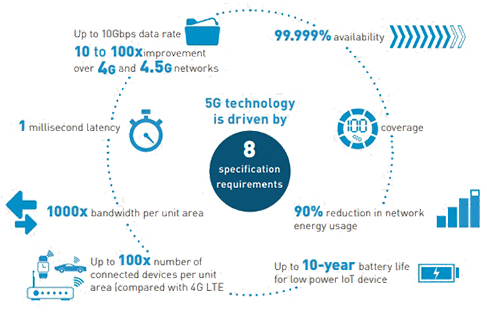First, I tell you the answer is No.
Why?
Let me introduce.
In the field of civil communication technology, standardization is a problem that cannot be circumvented in any case, because it involves the problem of global interconnection. In the case of global use of 5G, a country skips 5G and uses another technology, which will cause that country to be unable to communicate with other countries.

How is the mobile communication standard formulated?
- Vision solicitation stage: Like 6G, it is proposed at this stage: “smart connection”, “deep connection”, “holographic connection” and “ubiquitous connection”, and these four keywords are common It constitutes the overall vision of “one mind and a world, everything is at your heart”.
- Define the system key performance indicators-KPI: peak data transmission rate, user experience transmission rate, delay, reliability, connection density and traffic density per unit area, maximum moving speed, spectrum efficiency, and network energy efficiency.
- Standard setting stage: In response to the system indicators mentioned above, related companies including equipment manufacturers, mobile phone manufacturers, chip manufacturers and even related industrial companies have begun their own R & D and gradually formed their own solutions. After a long period of incubation, the standard organization 3GPP will convene relevant meetings to fully discuss the solutions proposed by various companies, select the optimal solutions for each technical point, and finally organize and summarize these optimal solutions. Form a complete system technical standard.
- Standard improvement and evolution stage: There are unavoidable omissions and errors in the formulation of standards. Each manufacturer will write the technical errors (CR) found in the implementation of the standards and submit them to the standards organization. After discussion and approval, the standards will be revised accordingly. The corresponding standard will also be upgraded to a new version.
As can be seen from the above, the successful formulation of communication standards must be the result of a large global collaboration, which is doomed to be impossible only by a single country or enterprise.
Each technical standard is the inheritance and continuation of the previous generation of technologies.

4G key technology Multiple access methods: uplink OFDMA, downlink SC-FDMA antenna solutions: transmit diversity, MIMO, beamforming, flexible bandwidth configuration methods: six Other key technologies of available bandwidth: 64QAM, hybrid automatic repeat (HARQ), adaptive adjustment coding (AMC). 5G key technology uses large-scale antenna technology (Massive MIMO), NOMA (Non-orthogoonal Multiple Access) non-orthogonal multiple access technology, flexible duplex technology, ultra-dense networking, low latency and high reliability IoT design, high frequency Signal transmission technology, new transmission waveform technology, advanced coding and modulation technology (high-order 256QAM) and other key technologies. Comparing the key technologies of 4G and 5G, the Massive MIMO technology used by 5G in antenna technology is the continuation and development of 4GMIMO technology; 5G’s 256QAM modulation technology compared to 4G’s 64QAM modulation technology, but the increase in the modulation order has no substance Sexual change. See more: 9 Benefits that 5G Can Provide while 4G Can’t
In addition, the transmit diversity, HARQ, AMC, and QPSK technologies used by 3G are still adopted in the 4G era. Compared with 4G, 5G has many more key technology types, because the application scenarios of 5G have increased from one to 4G. However, although 5G has been released for almost one year and many 5G devices are released, we still use 4G phone. What stage has 6G technology developed to now? 6G technology has just passed the stage of vision solicitation and is in the early stage of determining the key performance indicators of the system.

On October 25, 2019, based on the results of the first global 6G summit held in March, the white paper “Key Drivers and Research Challenges for 6G Wireless Intelligence Everywhere” was released. According to this white paper, 6G technology may arrive in 2030. The peak transmission speed of 6G is as high as 100Gbps-1Tbps, which is at least 10 times faster than 5G of 10Gpbs; positioning accuracy can reach 10 cm indoors and 1 meter outdoors, which is also 10 times higher than 5G; and the communication delay is shortened to only 0.1 ms, and 5G is 1 ms.
Summary: 6G technology must be based on the development and evolution of 5G technology. 5G is an insurmountable technological stage.
Learn More:
What is 6G? What Can We Look Forward?
9 Benefits that 5G Can Provide while 4G Can’t

